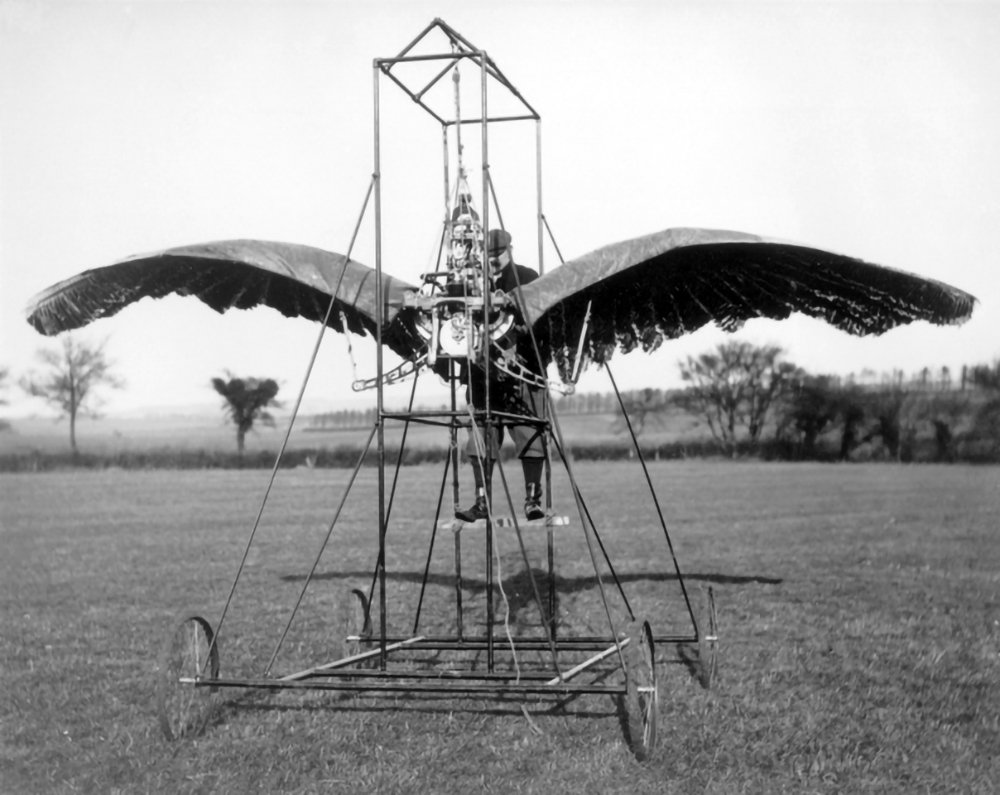E.P. Frost’s Ornithopters
Sketch of E.P. Frost’s first ornithopter design, built and tested between 1870 to 1877. The machine consisted of three pairs of wings and relied on a steam engine for power.
Pictured above is a conceptual sketch for an ornithopter by English aviation pioneer Edward Purkis Frost. Frost began his studies into human flight in 1868, and went on to build and test two designs for an ornithopter. The first, pictured above, had three pairs of wings, one of which would beat up and down in order to produce lift. The others seem to be for stabilization. The entire machine was to be powered by a 20-25 horsepower steam engine, but when construction began Frost was only able to get a 5 horsepower engine. Needless to say, this much smaller engine wasn’t enough to lift the craft off the ground. Below is a photo of the built prototype.
Photo of E.P. Frost’s first prototype of an ornithopter from the design sketch above.
Frost’s first ornithopter was a large and cumbersome device. It’s unclear why he decided to include three pairs of wings, especially considering two of them weren’t designed to move. After failing to achieve liftoff with his first ornithopter design, Frost went back to the drawing board, and in 1902 he began work on a second design with a few collaborators.
Ornithopter prototype by E.P. Frost, built in 1902 and refined until 1904. According to Frost, the machine successfully lifted from the ground in 1904.
Pictured above is a photo of Frost’s second ornithopter prototype. This design is much smaller and simpler, with only one pair of wings. Unlike the first design, this machine was powered by an internal combustion engine. These refinements paid off; according to Frost, the machine successfully achieved liftoff under its own power in 1904. This wasn’t a sustained flight, but rather a jump or a hop. Still, it should be seen as a success.
E.P. Frost’s ornithopters occupy a niche in the history of human flight, but they represent a key moment in the history of ornithopters. His second design, though impractical, demonstrated that flapping wings can produce enough lift to carry a human pilot. He didn’t achieve flight, but he made meaningful progress with his machines, and he also went on to be the president of the Royal Aeronautical Society from 1908-1911.
Read more about other ideas for flying machines here.



